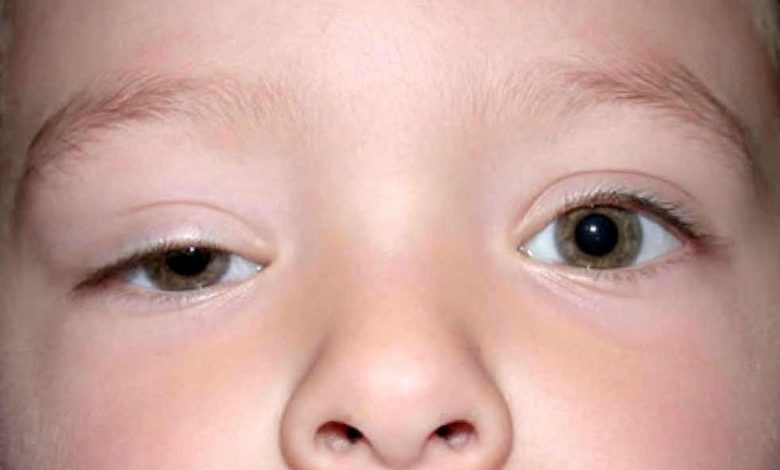Omission of the upper eyelid, ptosis in infants and children: what is this, causes, symptoms, diagnostics, treatment, prevention

Ptosis – infants and children; Blepharoptosis – children; Congenital ptosis; Eyelid drooping – children; Eyelid drooping – amblyopia; Eyelid drooping – astigmatism
Ptosis is a medical term, used to describe the drooping of the upper eyelid. In infants and children, ptosis can be congenital (present at birth) or an acquired condition, which affects the appearance of the face, it may also cause vision problems.
What is ptosis?
Ptosis – This State, in which the upper eyelid droops, and can range from weak to severe omission. It is more pronounced in infants and children., as they have large eyes and less developed eyelids. A drooping eyelid can close the pupil and partially block vision, which, if left untreated, can lead to vision problems.
Causes of ptosis in infants and children
Ptosis can be caused by several different factors, such as genetics, injuries and neurological diseases. In some cases, the cause of ptosis is unknown..
- Genetics: Ptosis can be passed from parent to child through a genetic mutation, which can cause the eyelids to droop as the baby grows.
- Trauma: Trauma to the eye or eyelid can lead to, that muscle, eyelid lifting, will become weak, which will cause a drooping of the eyelid.
- Neurological diseases: Neurological diseases, such as myasthenia gravis or Horner's syndrome, can cause drooping of the eyelids, because muscles, eyelid control, become weak.
When to See a Medical Professional
If you suspect, that your child is suffering from ptosis, it is important to consult a medical specialist for diagnosis and treatment of the disease. This is particularly important, if ptosis is severely expressed, or if it is accompanied by other symptoms, such as vision problems or headaches.
Symptoms of ptosis in infants and children
The main symptom of ptosis is a drooping eyelid, which can range from mild to severe. Other symptoms may include blurred vision., headaches or difficulty keeping the eyelid open.
Diagnosis of ptosis in infants and children
To diagnose ptosis, your child's doctor will perform a physical examination of your child's eyes and may order additional tests., such as MRI or CT, to determine the cause of ptosis.
Treatment of ptosis in infants and children
Treatment of ptosis depends on the cause of its occurrence. If ptosis is caused by genetics or trauma, surgery may be required, to raise the eyelid and restore vision. If ptosis is caused by a neurological disease, medications may be prescribed to treat the underlying disease.
Home treatment of ptosis in infants and children
If ptosis is mild, there are some simple home treatments, that can help. These include applying a warm compress to the eye., the use of drops to moisturize the eyes and the refusal of classes, requiring eye strain, eg, Long Read.
Prevention of ptosis in infants and children
The Best Way to Prevent Ptosis – It protect the baby's eyes from injury, as injuries are one of the main causes of ptosis. Stay tuned, to keep your child wearing safety glasses, when playing sports or participating in any activity, which can cause eye injury. Besides, keep an eye on the topic, to ensure that your child has regular eye exams, since this will help to identify the signs of ptosis at an early stage.
Used sources and literature
Bass N. Hypotonia and neuromuscular disease in the neonate. In: Martin RJ, Fanaroff AA, Walsh MC, eds. Fanaroff and Martin’s Neonatal-Perinatal Medicine. 11th ed. Philadelphia, PA: Elsevier; 2020:chap 56.
Olitsky SE, Marsh JD. Abnormalities of the lids. In: Kliegman RM, St. Geme JW, Bloom NJ, Shah SS, Tasker RC, Wilson KM, eds. Nelson Textbook of Pediatrics. 21st ed. Philadelphia, PA: Elsevier; 2020:chap 642.
Paces p, Cho sy, Practiced ad, Falsaperla R, Ruggieri m, Jin DK. Ptosis in childhood: A clinical sign of several disorders: Case series reports and literature review. Medicine (Baltimore). 2018;97(36):e12124. PMID: 30200099 pubmed.ncbi.nlm.nih.gov/30200099/.
